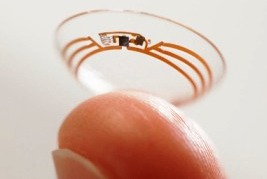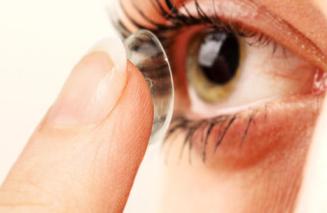Google survey on diabetes: One in 19 people in this world have diabetes. Many of them are poor, live outside of the US and have access to very few resources, both medical and financial. Why the wisdom of Google chasing the smart contact lens rather than something more pragmatic.
If the smart contact lens ever makes it to market, it might be welcome news for the more than 380 million people worldwide with diabetes and the number that could reach beyond 590 million by 2035, in accordance to the International Diabetes Federation.
New invention: Google announced that it has been working on this secret project at its Google[x] research lab. Not only has it developed prototypes of these smart contact lenses, but it is also completed multiple clinical research studies, met with the US Food and Drug Administration, and is looking for potential partners to carry the product to market.

Google has been working on smart contact lenses embedded with sensors "so small they look like bits of glitter" and an antenna "thinner than a human hair."
Over the years, many scientists have investigated a variety of body fluids as in tears in the hopes of finding an easier way for people to test their glucose levels. But as you can imagine, tears are hard to collect and study. It is consist of chips and sensors that are so small, they look like bits of glitter and an antenna thinner than a human hair might be a way to crack the mystery of tear glucose and evaluate it with greater accuracy.
But these lenses aren't being developed to give people super-human sight or cast the Internet over their field of view rather; they could potentially help diabetics monitor their glucose levels.
According to the co-founders: The project co-founders Brian Otis and Babak Parviz wrote in a blog post "We are now testing a smart contact lens that's built to measure glucose levels in tears using a tiny wireless chip and miniaturized glucose sensor that are embedded between two layers of soft contact lens material,". "We are testing prototypes that can generate a reading once per second. We hope this could someday lead to a new way for people with diabetes to manage their disease."
Earlier procedure and its bad impacts: Diabetes is said to be one of the fastest growing diseases all around the world. According to Google, it affects one in 19 people around globe. So as to keep blood sugar levels in check, diabetics have to give themselves finger prick blood tests throughout the day.
These tests can be time consuming and painful but they are crucial. If glucose levels get out of control, diabetics risk harm to their eyes, kidneys, and heart.

For many years scientists have been investigating other ways to test blood sugar levels. One branch of research has been exploring breathalyzers as a way to sense heightened glucose levels. Researchers have also looked into using tears for glucose tracking that is where the idea of a contact lens came along.
Using tears is complicated, though, since it's been hard for scientists to gather tears for testing. So, it is still unclear how successful this body fluid works in measuring glucose levels. In addition, this product is far off from any sort of mainstream applied. Not only does Google want to find partners to get the contact lenses to market, but it also needs to go through arduous FDA clearance procedure.
Moreover blood sugar testing; Google also hopes that the smart contact lenses can warn users if their glucose levels are high or low.